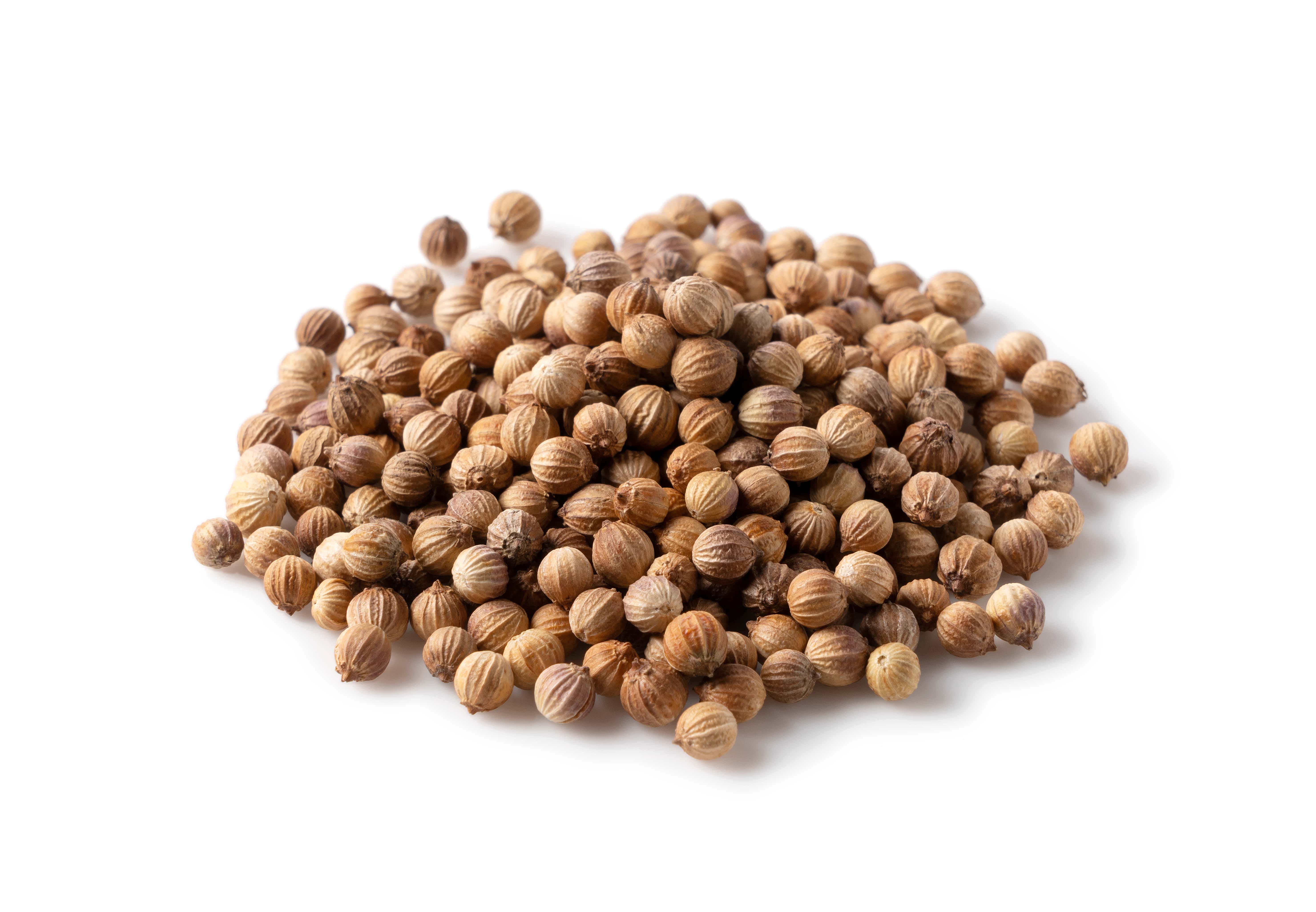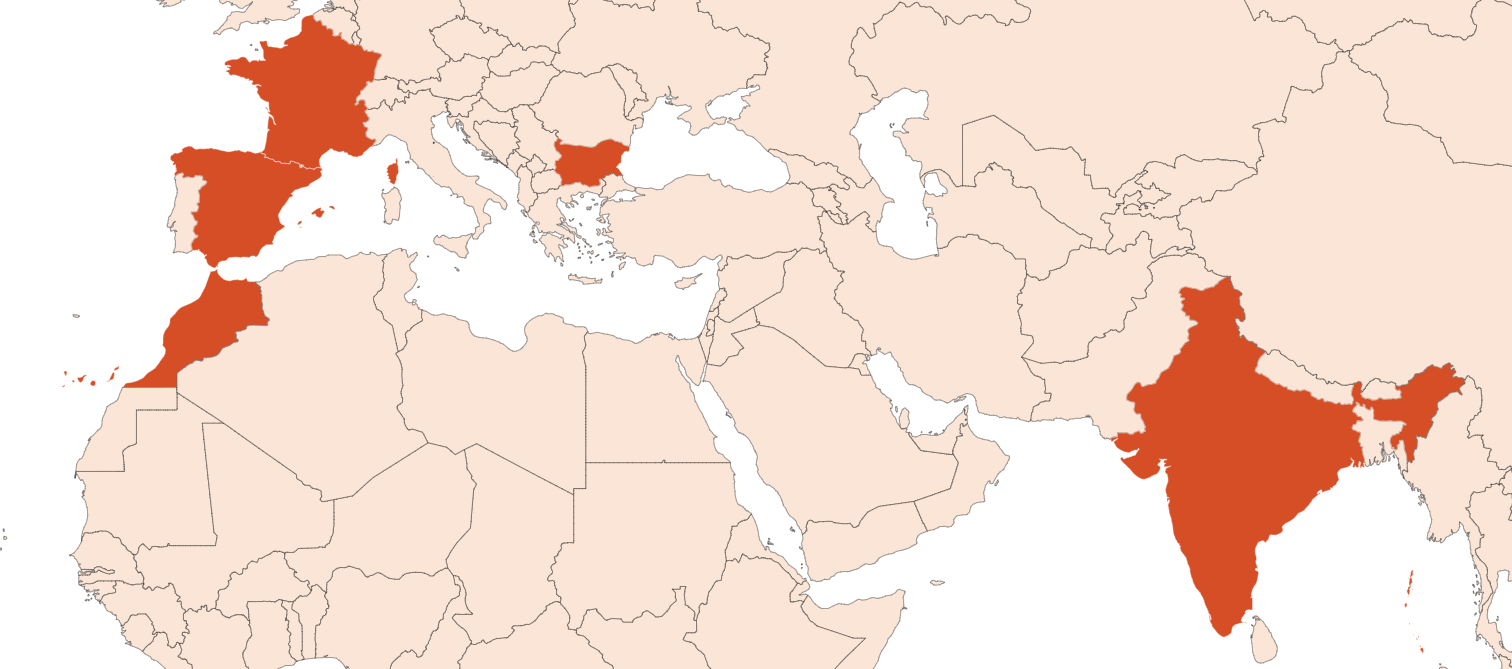Coriander Seed EO
Naturelle
Spicy > Cool Spices > Fresh Flowers > Agrestic

Crédits photo: ScenTree SAS
Latin name :
Coriandrum sativum
Botanical profile :
Coriander is a plant belonging to the Apiaceae family and the genus Coriandrum.
Geographic origin :
Coriander is historically native to the Mediterranean sea and West Asia. Today, it is grown mainly in India (36% of world production in 2008), the main producer, but also in Bulgaria (28% in 2008), Morocco (7% in 2008) and Western Europe (France, Spain in particular).
Chemotypes :
There are two varieties of coriander:
Coriandrum sativum L. : Mainly cultivated specie The European variety is smaller, rounder and has a more powerful smell. The Indian variety is larger, oval and clear but has a less significant smell.
Coriandrum tordylium : Wid coriander, rarely used.
Coriandrum sativum L. : Mainly cultivated specie The European variety is smaller, rounder and has a more powerful smell. The Indian variety is larger, oval and clear but has a less significant smell.
Coriandrum tordylium : Wid coriander, rarely used.
Extraction process :
India produces coriander on about 600,000 hectares of land, in other words 400,000 tons every year. Exports of cilantro seed from India represents 35% of world exports. The seedlings are usually propagated by seed sowing in October-November, at a rate of 12 to 30 kg of seed per hectare cultivated, depending on climatic conditions (the more moist the soil is, the more seeds are planted). Seedlings are planted every one or several tens of centimetres. The cultivation of coriander is subject to the use of chemical or natural fertilizers depending on the crop. Finally, it needs a warm atmosphere and regular irrigation.
Seeds are usually collected by hand at their maturity (green to yellow in colour) and dried in the shade before steam distillation. At the end of the process, the essential oil is collected in an essencier by decantation.
The extraction yield of the essential oil oscillates between 0.1 and 0.8%.
The coriander leaves can also be distilled with a yield between 3 and 4%.
A supercritical CO2 extraction enables the collection of an extract about 10% richer in Linalool than a conventional distillation.
Seeds are usually collected by hand at their maturity (green to yellow in colour) and dried in the shade before steam distillation. At the end of the process, the essential oil is collected in an essencier by decantation.
The extraction yield of the essential oil oscillates between 0.1 and 0.8%.
The coriander leaves can also be distilled with a yield between 3 and 4%.
A supercritical CO2 extraction enables the collection of an extract about 10% richer in Linalool than a conventional distillation.
Major Components :
Linalool (40-90%)
Geranyl Acetate (2-40%)
Gamma-Terpinene (2-14%)
Camphor (0-3%)
Beta-Pinene (0-3%)
D-Limonene (0-3%)
Citronellal (0-2%)
Geranyl Acetate (2-40%)
Gamma-Terpinene (2-14%)
Camphor (0-3%)
Beta-Pinene (0-3%)
D-Limonene (0-3%)
Citronellal (0-2%)
- Uses in perfumery :
- Used in floral-fresh notes, fougere, chypre and coniferous notes.
- Other comments :
- Coriander is a spice that has been used for a long time. Indeed, the first mentions of this spice are dated -5000 B.C. Many mentions of coriander cultures are also present in the Bible.
This essential oil allows the isolation of Linalool up to 90% for a very little ripe coriander seed.
The composition of the essential oil of coriander depends greatly on the geographical origin of the plant and its maturity.
The quality of the seed can be damaged by insects, chemical (especially antioxidants) and microbial (Salmonella) agents. Standards of quality are shaped by the AFNOR (French Association of Standards), the ESA (European Spice Association) or the AGMARK (Spices Grading and Marking Rules) in India. These specifications concern the quality of the seed and the leaf, as well as the physicochemical properties of the essential oil.
Adulteration is possible with a diverse crops communal pot that contains seeds that are not ripe or overripe, or by adding synthetic Linalool. - Volatility :
- Head/Heart
- Appearance :
- Colorless liquid
- Stability :
- The terpenes identified in this raw material can polymerize when they are oxidized
- Price Range :
- €€
- Aromatherapy :
Informations provided below are taken from reference works in aromatherapy. They are given for information purposes only and can not constitute medical information, nor engage the responsibility of ScenTree.
The coriander seed is renowned for its euphoric properties, parasiticides and is recommended in cases of dyspepsia (gastric pain), asthenia, general fatigue and osteoarthritis.

Crédits photo: ScenTree SAS
- EINECS number :
- 84775-50-8
- FEMA number :
- 2334
- Allergens :
- Linalool - Geraniol
- IFRA :
- This ingredient is not restricted
To learn more about IFRA's standards : https://ifrafragrance.org/safe-use/library
ScenTree is solely responsible for the information provided here.



